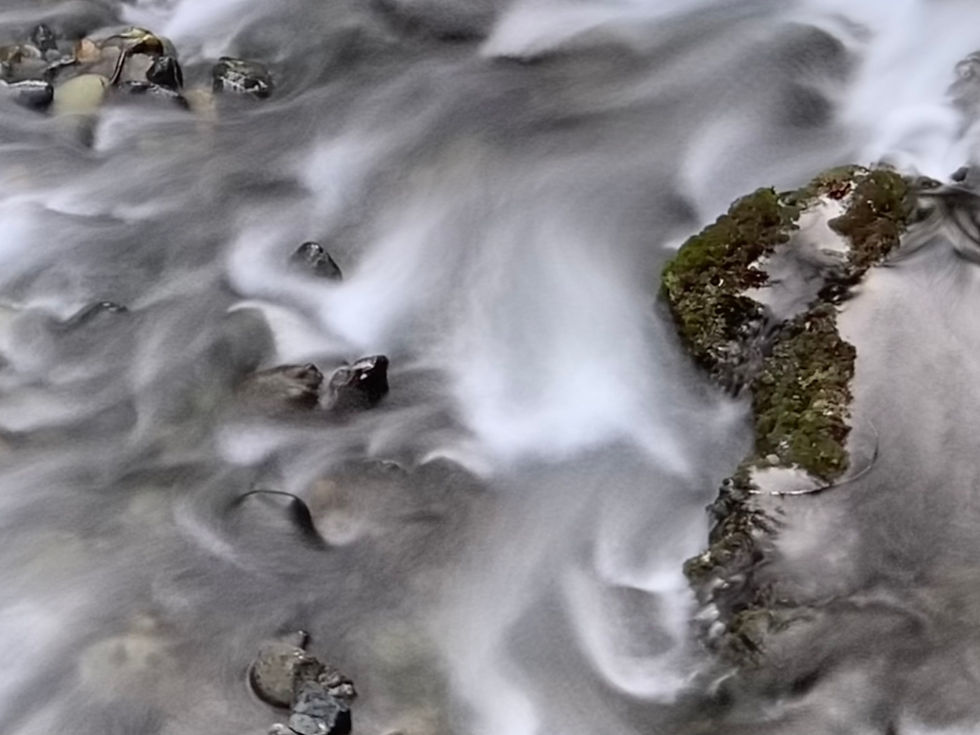Fountain of Inspiration
- Don Rommes
- Jan 11, 2023
- 2 min read
Interesting photographs can be found pretty much anywhere—if you look. But looking is not necessarily seeing, and seeing is a vital part of the creative process.

PHOTOGRAPHS FOUND IN A FOUNTAIN. A colorful abstract photo is found in the concentric ripples of a pond. Photo: © Donald J. Rommes
Nancy and I recently stayed in a sprawling Florida resort while visiting family. The weather was sunny and dry, and as refugees from an unusually cold Pacific Northwest winter, the warm temperatures were an irresistible invitation to take long walks on the grounds.
The resort property is notable for its many ponds—most of which have large fountains to aerate the water. One afternoon, at the end of a long walk, we rested on a bench in a gazebo over the water, lazily observing the fountain, calmed by the white noise of falling water.
The pond's surface was rippled by an orderly pattern of concentric circles comprised of wavelets generated by the fountain, The ripples were largest nearest the fountain, diminishing toward the pond's periphery. When the light was right and the viewing angle just so, the undulating surface of the water acted like a thousand tiny mirrors. Myriad, fragmented reflections of blue sky and neighboring buildings—railings, fences, walls, and windows—formed a luminous and colorful mosaic.
RESORT, POND, GAZEBO. While not immediately obvious, a pleasant scene of resort buildings, pond, and waves is the source of numerous abstract photos. Cell phone video.
We noticed the patterns made by the fragments of reflections, and realized the potential for abstract images, so we reached for our cell phones to explore various compositions. Zoomed in as far as we could, each composition showed a general pattern, but it varied as the wavelets marched across the frame. The regularly irregular patterns morphed continuously—like a kaleidoscope—so every press of the shutter captured a similar, but unique image. .
We then turned to our digital cameras. All we had to do was find an interesting pattern, then keep shooting as the pattern was rearranged. We would select the best of them later.
REFLECTING WAVELETS CLOSE-UP. Outward-moving ripples regularly rearrange a reflection to create a mosaic-like effect. Cell phone video.

MOMENT IN TIME. With such a rapidly shifting pattern, it is impossible to be certain of a precise composition. Photo: © Donald J. Rommes
The rapidly changing patterns presented a challenge. Exposure was easy, but composition could never be precise. A certain amount of serendipity was required, but by taking multiple exposures we increased the likelihood that serendipity would be kind.
In the end, there were many photographs to choose from—all alike, but different. Post processing was fairly simple—adjusting color temperature and tint, and using dodging and burning to ensure even lighting.
We don't know if anyone else will respond to the images, but we are pleased with our results and enjoyed the process of making them. We are especially grateful to the creative muses that day who encouraged us to see and not just look.
VIDEO: POND PATTERNS AND COLORS. Alternating bands of yellow and pale blue make an abstract image with origins in reality. Cell phone video.

PHOTO: POND PATTERNS AND COLORS. A single photograph from the same scene as above. Photo: © Donald J. Rommes




Comments